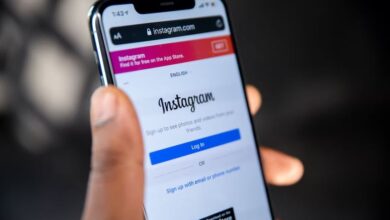Introduction:
Mobile applications have become a ubiquitous part of modern life, and they offer us unprecedented convenience and accessibility. However, the increasing reliance on mobile apps has also raised the risk of security breaches and data theft. As such, it has become essential for developers offering mobile app development services to implement the latest mobile app security best practices to ensure that their apps are secure against malicious attacks. In this article, we will delve into the best practices for mobile app security, outlining the steps that developers can take to fortify their apps and protect their users’ sensitive data.
I. Secure Authentication:
Authentication is the process of verifying the identity of a user. Mobile app developers need to ensure that the authentication process is secure to prevent unauthorized access. To ensure secure authentication, developers should use strong passwords and implement two-factor authentication. Passwords should be stored using secure encryption methods, and password resets should be required periodically to prevent the use of weak or compromised passwords. Additionally, developers should avoid storing passwords on the device, as this could potentially expose sensitive user data to malicious actors.
II. Encryption of Data:
Encryption is the process of converting plain text into cipher text to make it unreadable for unauthorized access. To fortify their apps against malicious attacks, developers should use encryption algorithms to protect sensitive data from unauthorized access. Developers should encrypt data both in transit and at rest to protect it from unauthorized access during transmission and storage on the device or server. Moreover, developers should use robust encryption algorithms to ensure that attackers cannot easily decrypt the data.
III. Robust Authorization:
Authorization is the process of verifying that a user has the necessary permissions to access certain resources. Mobile app developers should implement robust authorization mechanisms to prevent unauthorized access to sensitive data. To strengthen mobile app security, developers should implement the principle of least privilege, granting users only the necessary permissions to complete their tasks. Furthermore, developers should ensure that access controls are implemented securely, utilizing strong encryption and other security measures.
IV. Proper Session Management:
Session management is the process of managing user sessions to ensure that users remain authenticated and authorized throughout their session. Developers can prevent unauthorized access to sensitive data by implementing proper session management techniques. Such as setting session timeouts, logging users out after a period of inactivity, and using secure cookies. These techniques terminate user sessions after a certain period of inactivity, thus helping to secure sensitive data.
V. Protection Against Malware:
Mobile apps are susceptible to malware attacks, which can compromise the security of the app and the data it holds. Developers should implement measures to protect against malware such as using secure coding practices, regularly scanning for vulnerabilities, and using anti-virus software. Additionally, developers should ensure that the app is downloaded from a reputable source, as malicious apps can be disguised as legitimate apps.
VI. Code Obfuscation:
Code obfuscation is the process of making the code difficult to understand or reverse engineer. Developers should obfuscate their code to prevent attackers from easily understanding how the app works, making it more difficult for them to exploit vulnerabilities. Obfuscating the code can make it harder for attackers to understand how the app communicates with the server or how sensitive data is stored on the device.
VII. Regular Updates and Patches:
To maintain app security against the latest security threats, developers should regularly update their apps. To ensure prompt updating and patching after discovering vulnerabilities, developers should push out updates promptly and implement patches quickly. Additionally, developers should monitor the app for vulnerabilities and respond to any issues that arise. By regularly updating the app and implementing patches, developers can ensure that the app remains secure against the latest threats.
VIII. Implementing a Secure Development Lifecycle (SDL):
To ensure that security is integrated into every stage of the development process, developers should implement a secure development lifecycle (SDL). An SDL includes processes such as threat modeling, code review, and vulnerability scanning to identify and mitigate security risks.
Revolutionize Your School Management with Cutting-Edge Software and Mobile App: A User Review
Conclusion:
Mobile app security is critical to protect user data and prevent security breaches. By following the latest mobile app security best practices, developers can fortify their apps against threats such as malware, data theft, and unauthorized access. Implementing secure authentication, encryption of data, robust authorization, proper session management, protection against malware, code obfuscation, regular updates and patches, and implementing a secure development lifecycle (SDL) can help to ensure that mobile apps are as secure as possible. By prioritizing mobile app security, developers can build trust with their users and create a more secure mobile app landscape.





